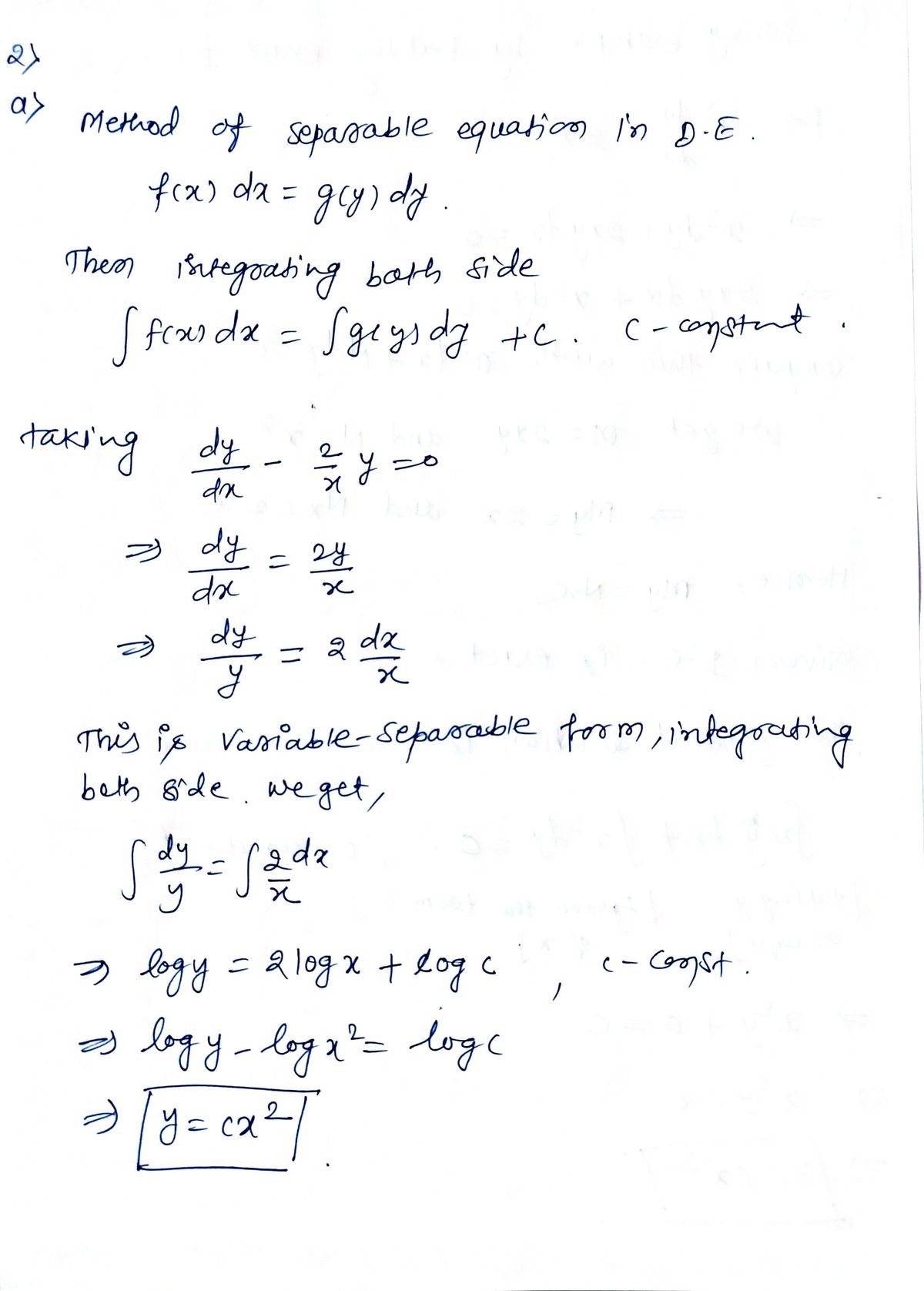2. (a) What theorem is used to justify the method of solving separable equations? Identify one of the equations in (1) that is separable and solve it. (b) Summarize the method used for solving linear, first-order ODE's. What theorem is used to justify this method? Identify one of the equations in (1) that is linear and solve it. (c) Summarize the idea behind exact ODE's. Identify one equation in (1) that is either exact
2. (a) What theorem is used to justify the method of solving separable equations? Identify one of the equations in (1) that is separable and solve it. (b) Summarize the method used for solving linear, first-order ODE's. What theorem is used to justify this method? Identify one of the equations in (1) that is linear and solve it. (c) Summarize the idea behind exact ODE's. Identify one equation in (1) that is either exact
Advanced Engineering Mathematics
10th Edition
ISBN:9780470458365
Author:Erwin Kreyszig
Publisher:Erwin Kreyszig
Chapter2: Second-order Linear Odes
Section: Chapter Questions
Problem 1RQ
Related questions
Question
for question 2 part a-c

Transcribed Image Text:2. (a) What theorem is used to justify the method of solving separable equations? Identify one
of the equations in (1) that is separable and solve it.
(b) Summarize the method used for solving linear, first-order ODE's. What theorem is used
to justify this method? Identify one of the equations in (1) that is linear and solve it.
(c) Summarize the idea behind exact ODE's. Identify one equation in (1) that is either exact
or exact after using an integrating factor and solve it.
(d) Summarize the method used for solving homogeneous equations. Identify one equation
in (1) that is homogeneous and solve it.
(e) Summarize the method used for solving Bernoulli equations. Identify one equation in (1)
that is homogeneous and solve it.

Transcribed Image Text:1. For each first order ODE, determine if it is separable, linear, exact or exact after using an
integrating factor, homogeneous, and/or Bernoulli. Multiple labels may apply. Justify all
conclusions. You do not need to solve.
(a) - ²y = 0
(b) x² + 2xy = 0
(c) y² - xy = 0
(d) ry³ + ¹y+d=0
(e) = (x+y + 2)²
Expert Solution
Step 1

Trending now
This is a popular solution!
Step by step
Solved in 3 steps with 3 images

Recommended textbooks for you

Advanced Engineering Mathematics
Advanced Math
ISBN:
9780470458365
Author:
Erwin Kreyszig
Publisher:
Wiley, John & Sons, Incorporated

Numerical Methods for Engineers
Advanced Math
ISBN:
9780073397924
Author:
Steven C. Chapra Dr., Raymond P. Canale
Publisher:
McGraw-Hill Education

Introductory Mathematics for Engineering Applicat…
Advanced Math
ISBN:
9781118141809
Author:
Nathan Klingbeil
Publisher:
WILEY

Advanced Engineering Mathematics
Advanced Math
ISBN:
9780470458365
Author:
Erwin Kreyszig
Publisher:
Wiley, John & Sons, Incorporated

Numerical Methods for Engineers
Advanced Math
ISBN:
9780073397924
Author:
Steven C. Chapra Dr., Raymond P. Canale
Publisher:
McGraw-Hill Education

Introductory Mathematics for Engineering Applicat…
Advanced Math
ISBN:
9781118141809
Author:
Nathan Klingbeil
Publisher:
WILEY

Mathematics For Machine Technology
Advanced Math
ISBN:
9781337798310
Author:
Peterson, John.
Publisher:
Cengage Learning,

